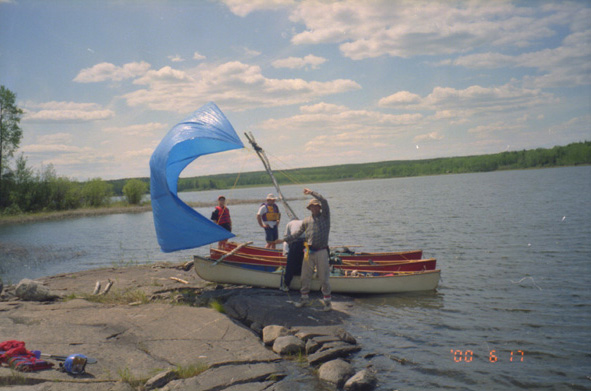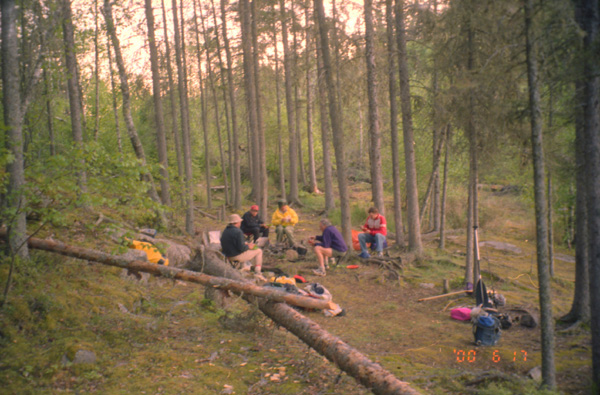 Peter made the fire and coffee. We had instant oatmeal for breakfast.
It was wolfed down, but we still weren’t on the water until 9.30 am.
One km brought us around the point into the head wind for the remaining 2
km to portage 5
Peter made the fire and coffee. We had instant oatmeal for breakfast.
It was wolfed down, but we still weren’t on the water until 9.30 am.
One km brought us around the point into the head wind for the remaining 2
km to portage 5
Day 3, Saturday, 17
June
 Peter made the fire and coffee. We had instant oatmeal for breakfast.
It was wolfed down, but we still weren’t on the water until 9.30 am.
One km brought us around the point into the head wind for the remaining 2
km to portage 5
Peter made the fire and coffee. We had instant oatmeal for breakfast.
It was wolfed down, but we still weren’t on the water until 9.30 am.
One km brought us around the point into the head wind for the remaining 2
km to portage 5
We were still paddling northerly, into the wind, on Rachkewich Lake, for 4 km to portage
6.

The beaver pond
We put in and paled along a channel through the reeds, and came to a large beaver dam, several tens of feet long and about 5 feet high.

A remarkable engineering feat by the beaver!
We had to traverse two more smaller dams until the reed
channel finally exited into Trout Lake.
We were now in the Churchill River system. The wind had become more light and variable, but had shifted 180 degrees and was now generally from the south. It also seemed to be increasing in strength, so we decided to try sailing down Trout Lake. Two trees were cut for masts, two more for cross braces, and the Mad River trimaran was launched.

The Mad River Explorer Trimaran I
Unfortunately, the wind which had howled during construction of the trimaran, dropped during the afternoon, and the sailing was only moderately successful.

We scouted the first rapid and decided not to run it.
It was too difficult a rapid to be the first one of the year, and we
weren’t ready for it. Brent and
Warren suspected that there was a nice route down river left, but even that
should only have been run by a lightly loaded canoe or a single paddler.
We portaged and found a nice campsite at the lower end of the rapid.
The black flies descended upon us again:
we were prepared, and pulled out the bug hats.
After a little bit of fishing, Warren went on to prepare dinner, a
home-dehydrated putanesca pasta sauce and “orzo” noodles (great for canoeing
because they pack up small and cook fast).
This meal was supplemented by two jack fish (northern pike) caught by
Mike and filleted on Warren’s paddle by Peter and Mike.
Glenfiddich for libation. The
non-drinkers had to console themselves with chocolate chip fudge cookies, which
the drinkers also partook of.

Dinner in Camp at Trout Portage